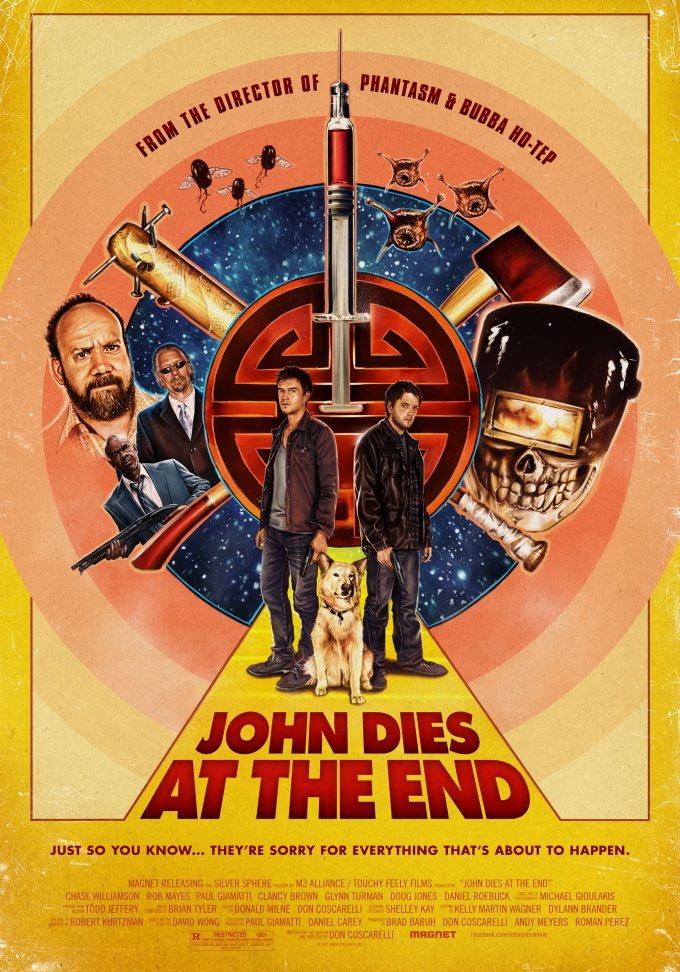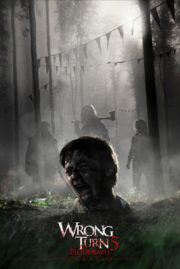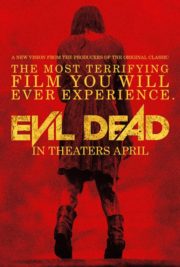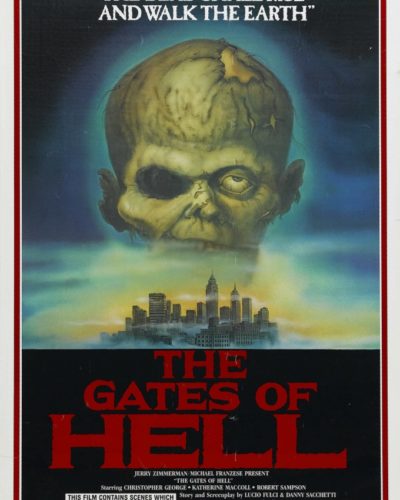“Solving the mystery requires understanding of the nature of the unsolvable.” – A Dive into the Mind-Bending ‘John Dies at the End’
In the peculiar world of horror cinema, ‘John Dies at the End’ stands out as an anomaly. A 2013 film directed by Don Coscarelli, famed for the ‘Phantasm’ series, this film is an adaptation of David Wong’s (pseudonym for Jason Pargin) novel of the same name. It’s an uncanny blend of horror, comedy, and science fiction that refuses to fit neatly into any single category. Viewers follow Dave and John, two college dropouts, as they encounter a paranormal substance dubbed “soy sauce,” which serves as their gateway into a reality-twisting adventure where they face off against otherworldly forces.
Reality Warping Nightmares: Crafting Atmosphere and Tone
The film’s atmosphere is an eclectic mix that fluctuates between moments of dry humor and stark terror. ‘John Dies at the End’ carves a unique horror atmosphere not by relying on traditional suspense and foreboding but rather through its sheer unpredictability and the existential dread of an unreliable reality.
Director Don Coscarelli plays with the concept of tension in ways that disorient the viewer. Transitions between the hilariously bizarre and genuinely disturbing are seamless, creating a rollercoaster of emotional responses that keep audiences on edge. The tonal shifts, while abrupt, contribute to the horror by ensuring viewers never quite settle into a comfort zone.
Surreal Visions: Cinematography and Audio
Visual Eccentricities
The cinematography of ‘John Dies at the End’ is as unconventional as its plot. The use of lighting and colors ranges from the mundane to the vibrantly psychedelic, corresponding with the mind-altering experiences the characters go through. Camera angles and special effects are utilized in a fashion that enhances the surreal quality, giving certain scenes a dreamlike or nightmarish feel. What stands out visually is the film’s ability to pivot from normalcy to the bizarre within a single shot, cementing its visual storytelling prowess.
Echoes of Horror
The soundscape of the movie deserves equal attention. The soundtrack indulges in an eerie and sometimes whimsical mix, complimenting the shifting tones of the narrative. Sound effects are cleverly employed, heightening the atmosphere during moments of suspense and serving as punchlines to the film’s darker jokes. Key scares are accentuated by sonic cues that make the viewer’s skin crawl, proving the sound design’s effectiveness in bolstering the horror experience.
Character Chaos and Horrific Humor: Performances and Horror Elements
In this odyssey of horror-comedy, performances are crucial. The leading duo, portrayed by Chase Williamson and Rob Mayes, manage to ground the fantastical events in some semblance of reality. Their reactions to the terror that unfolds are relatable, yet instilled with a comedic touch, allowing for a character-driven narrative that fosters empathy amidst absurdity.
The horror mechanics are a whirlwind of psychological, supernatural, and body horror, creating a trifecta that keeps the viewer unbalanced. The film defies convention, making its horror elements difficult to predict, which is both its strength and weakness. While the psychological mind-benders successfully induce anxiety, the reliance on occasional gross-out effects and sudden shocks might not resonate with every horror devotee.
Reflections Through the ‘Soy Sauce’: Themes and Effectiveness
‘John Dies at the End’ operates on levels beyond immediate scares. It’s imbued with existential musings and a critique of the human quest for meaning in a seemingly indifferent universe. The horror becomes a backdrop against which deeper discussions about perception and reality are toyed with. This added layer enriches the film, offering substance to complement the style.
In terms of effectiveness, the film will polarize audiences. Traditional horror fans may find the tonal dissonance jarring, whereas those looking for a fresh, genre-blending experience will be intrigued and possibly delighted. It’s best suited for viewers who appreciate oddity in their horror and don’t mind a side of laughter with their scares.
While difficult to compare with traditional horror titans, ‘John Dies at the End’ could be said to share cinematic kinship with cult classics such as ‘Evil Dead II’ or more recently, ‘Cabin in the Woods,’ both of which defy horror norms with a smirk.
Conclusion: A Schrödinger’s Box of Fear and Fun
Don Coscarelli’s ‘John Dies at the End’ is a mosaic of horror, humor, and mind-bending phenomena that won’t appease every palate. Its strengths lie in the charismatic performances, unique atmosphere, and the courage to challenge genre expectations. Its weaknesses could be the occasionally disjointed storytelling and its potential alienation of conventional horror enthusiasts.
This film comes with a warning for graphic content and scenes that may be disturbing to some viewers. However, for those who relish a journey into the bizarre, where laughter meets lurking dread, ‘John Dies at the End’ is a curious piece of horror cinema awaiting to be unraveled. It’s a niche film, made for those who prefer their entertainment with an enigmatic twist.




